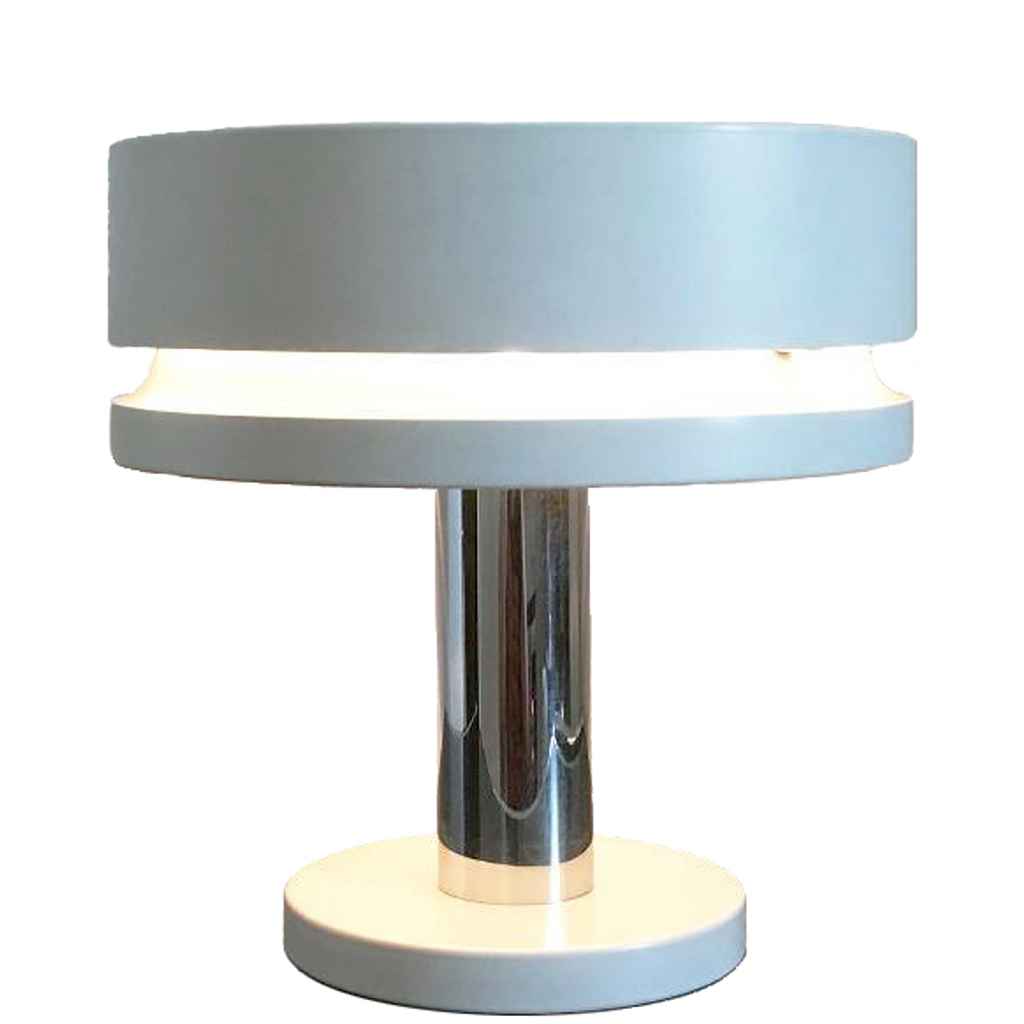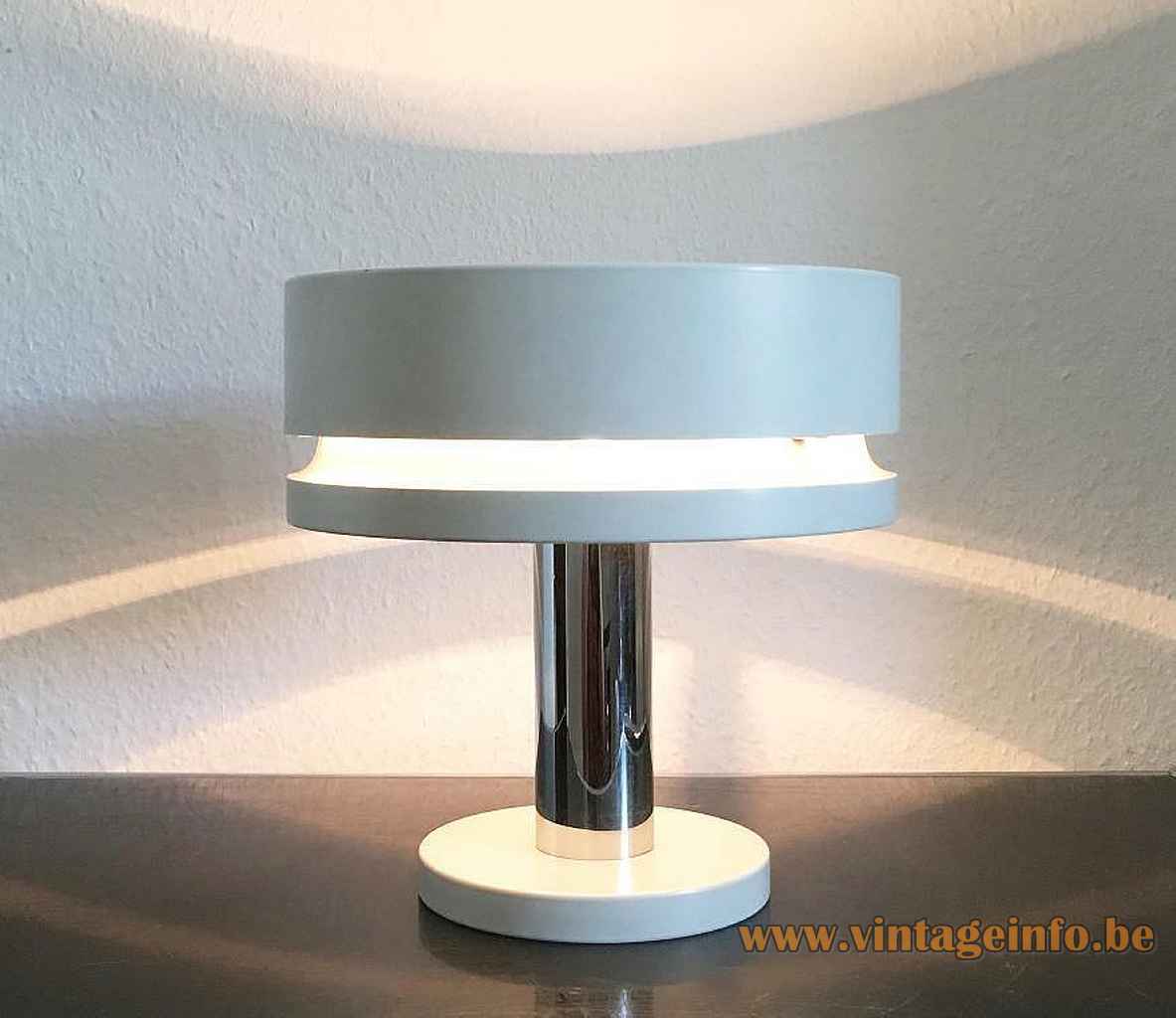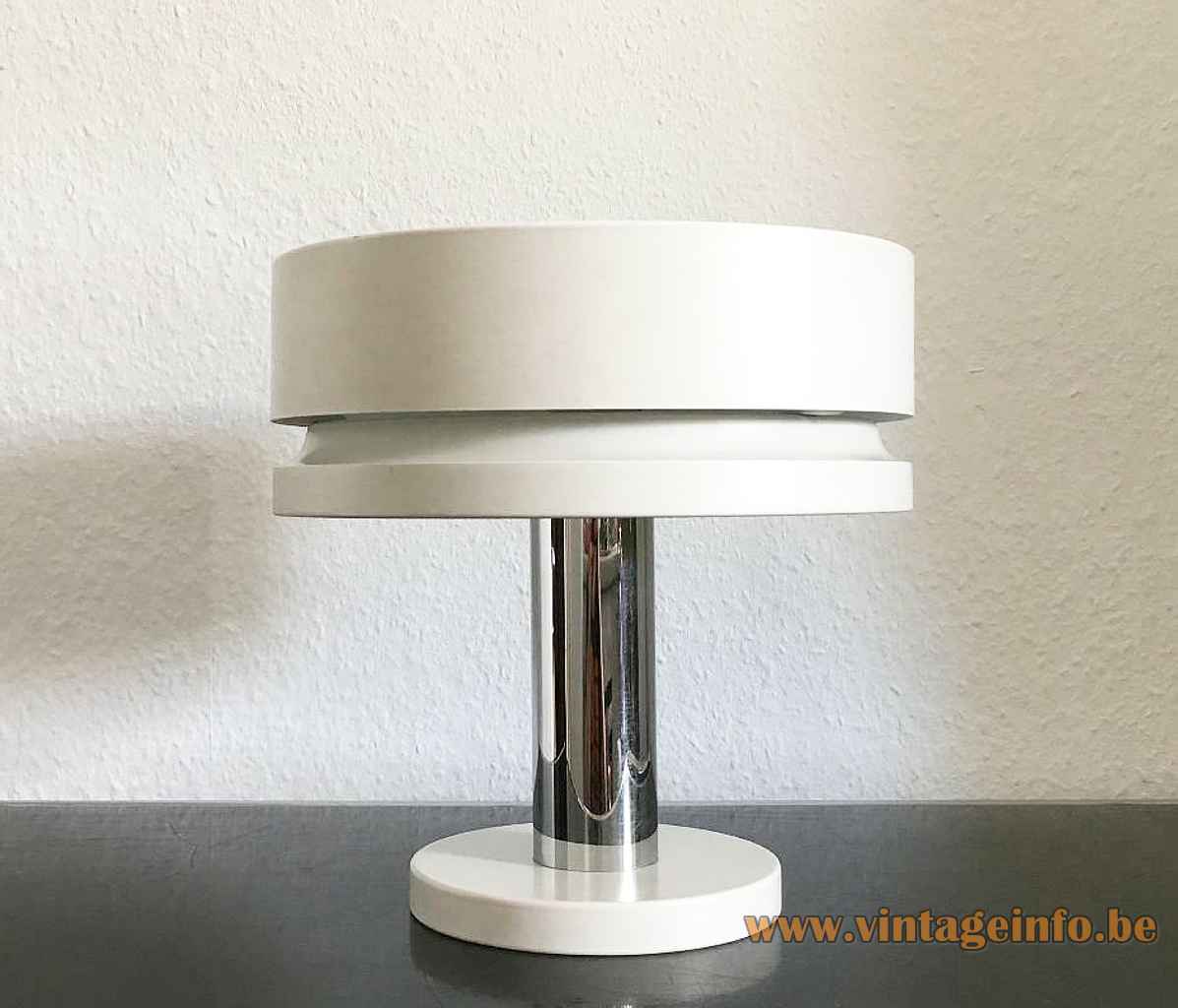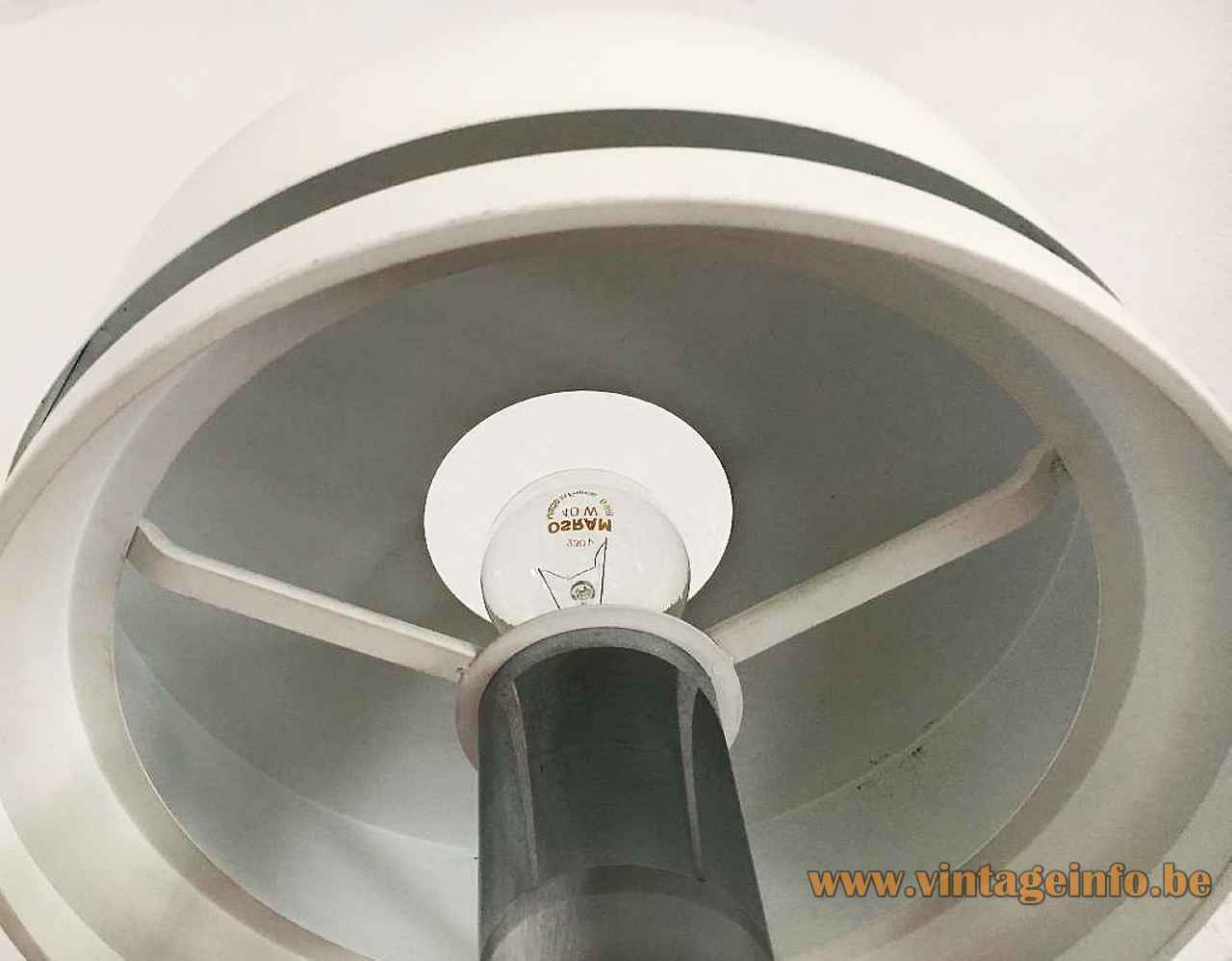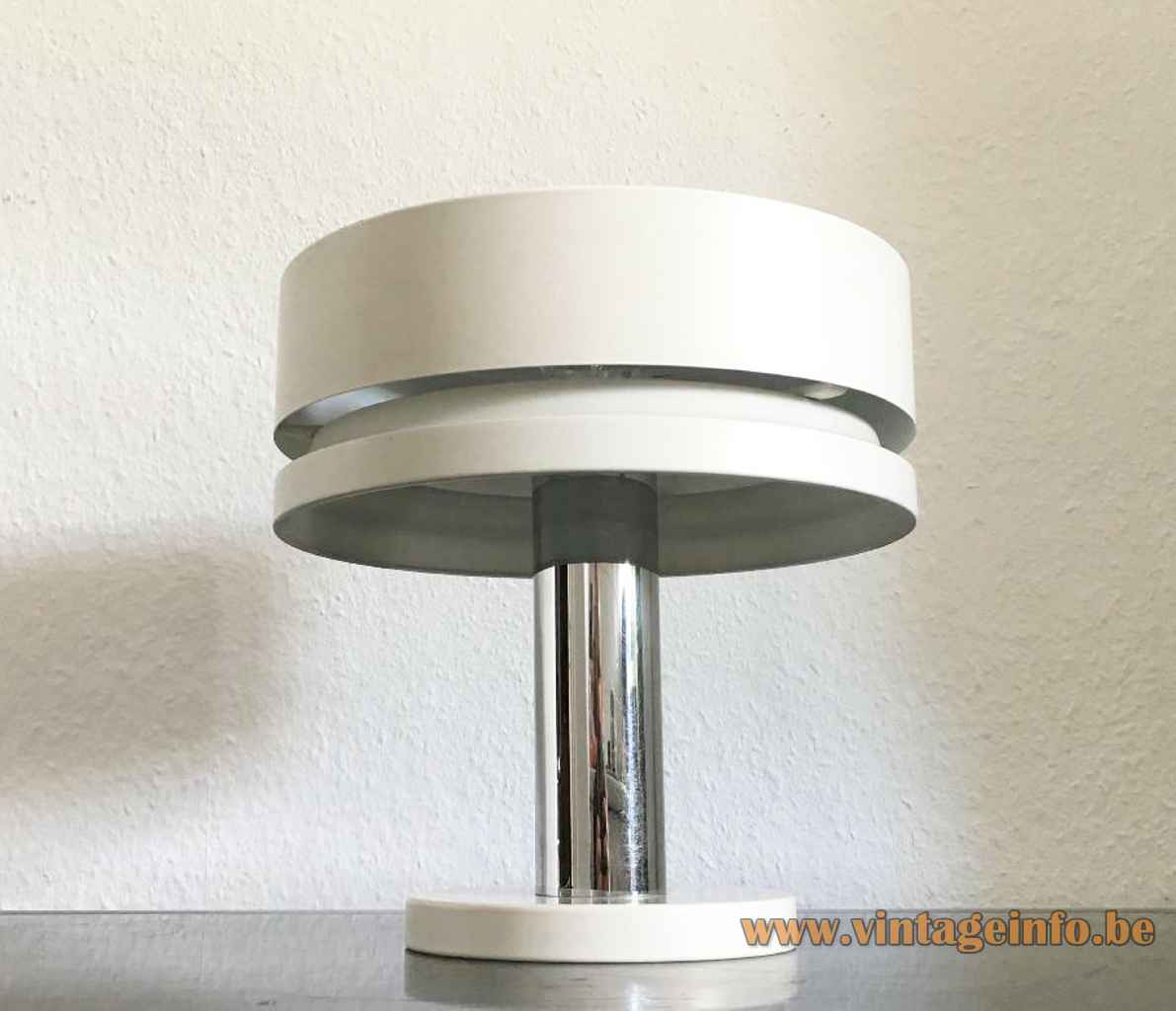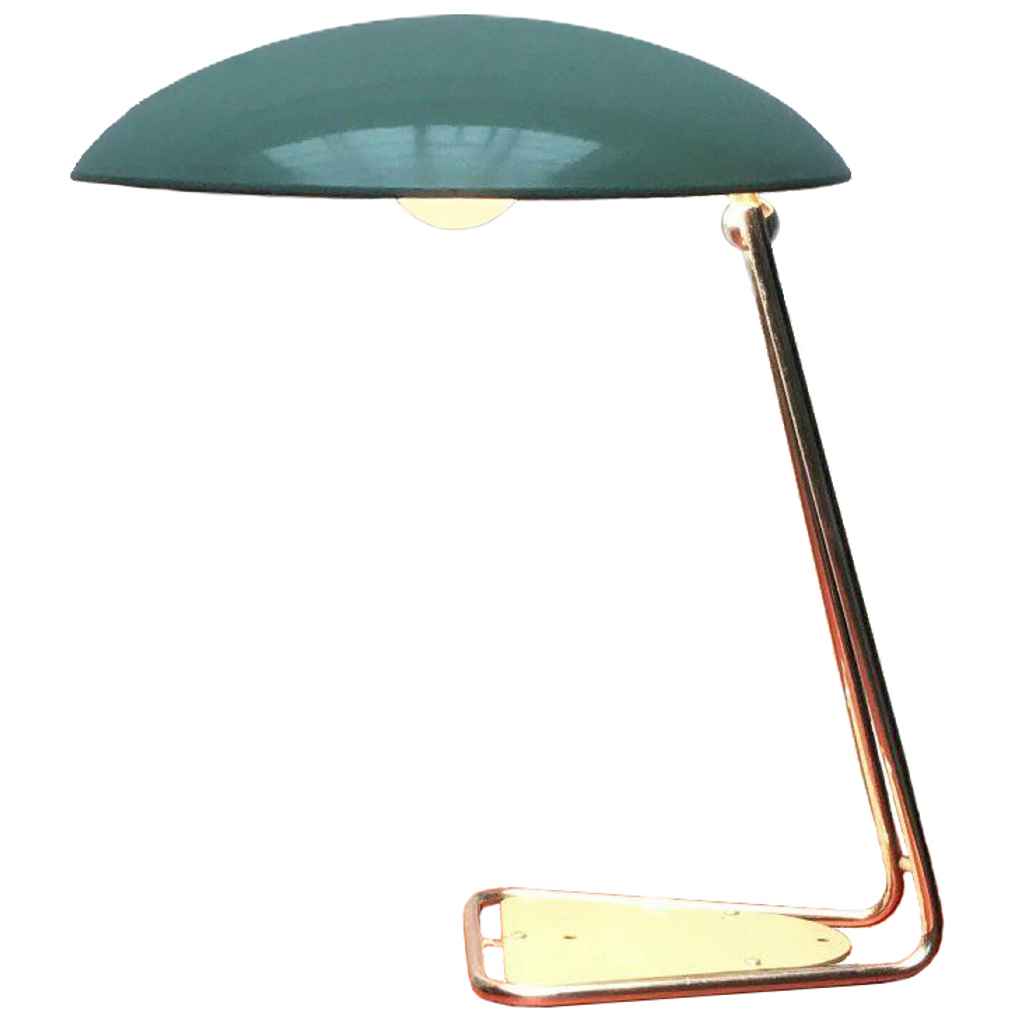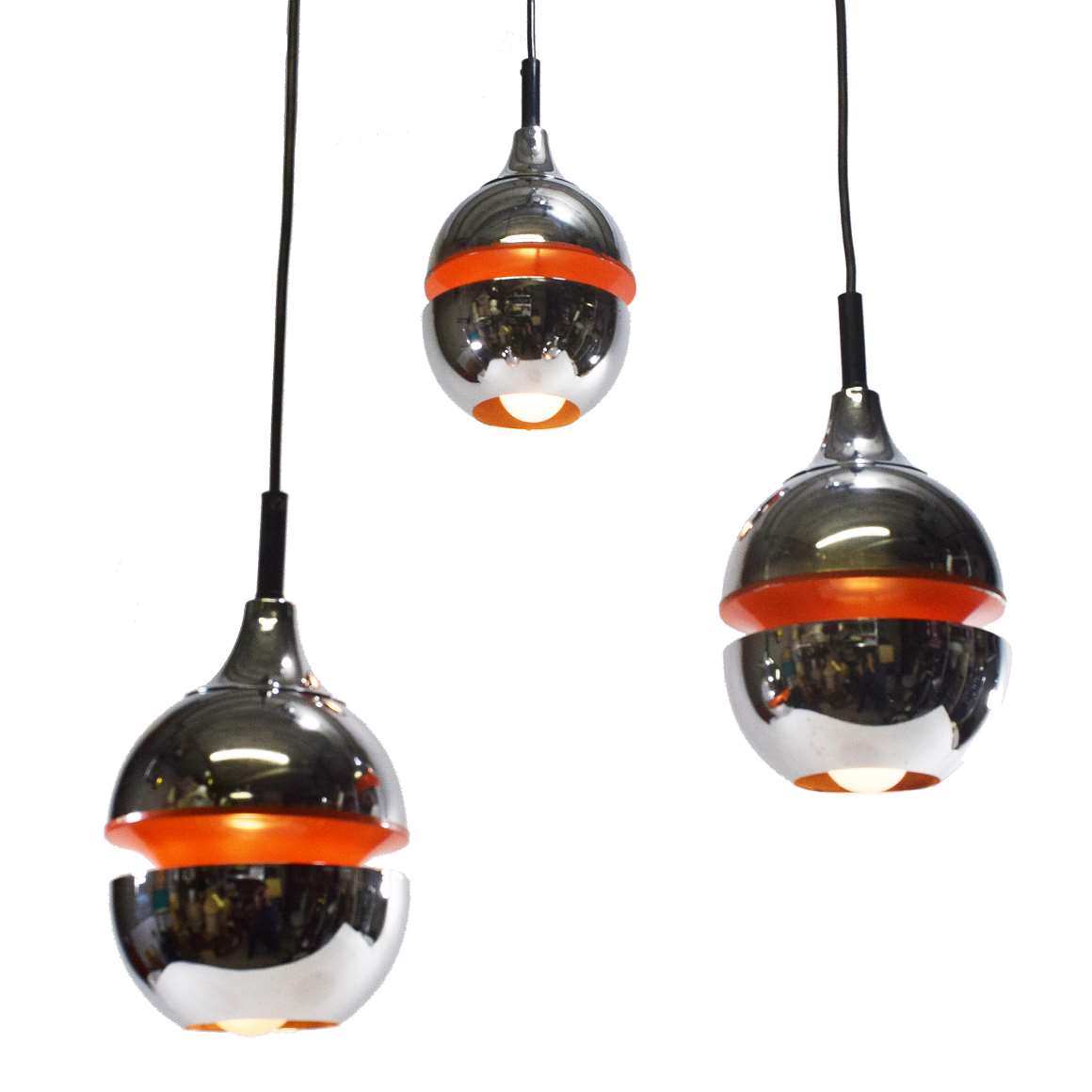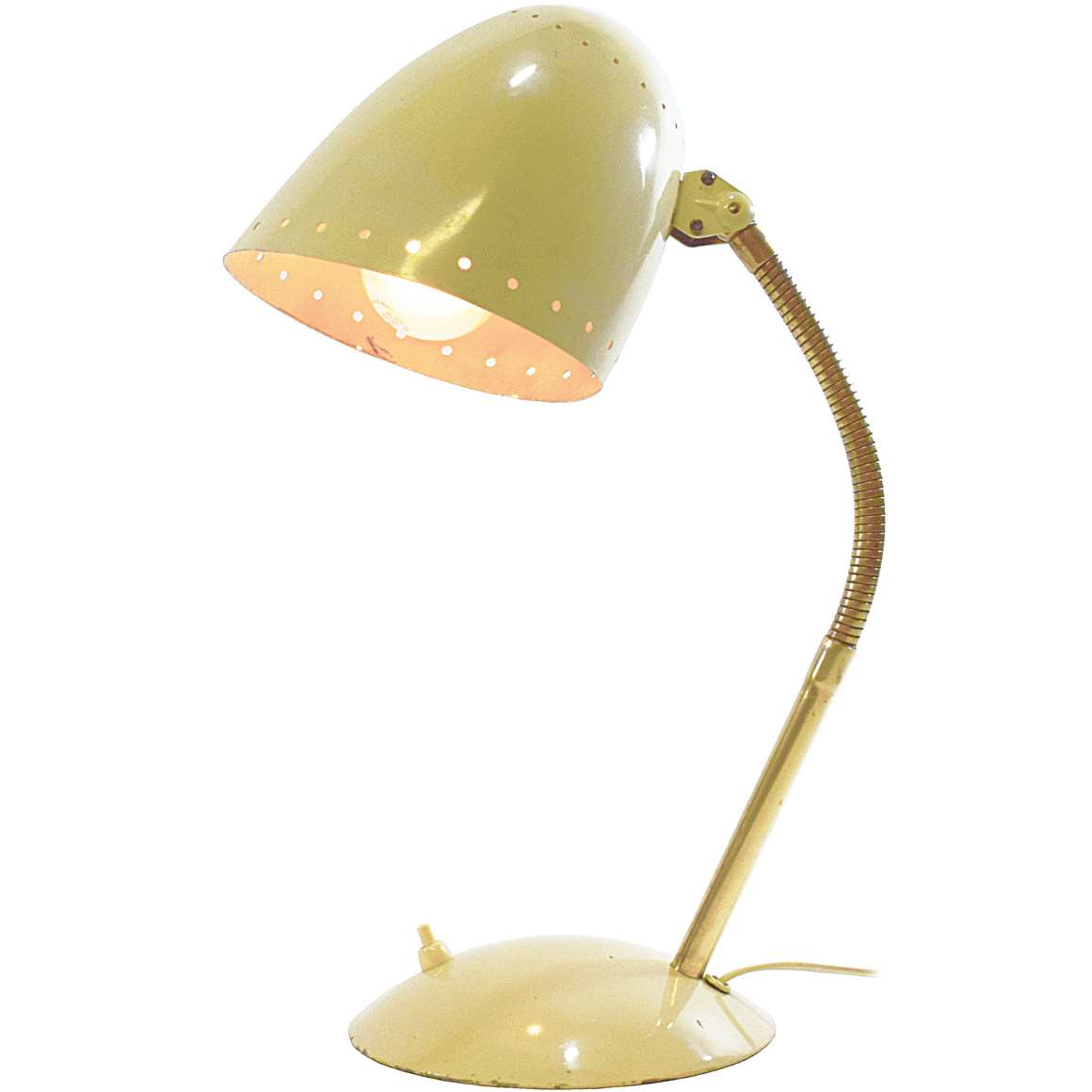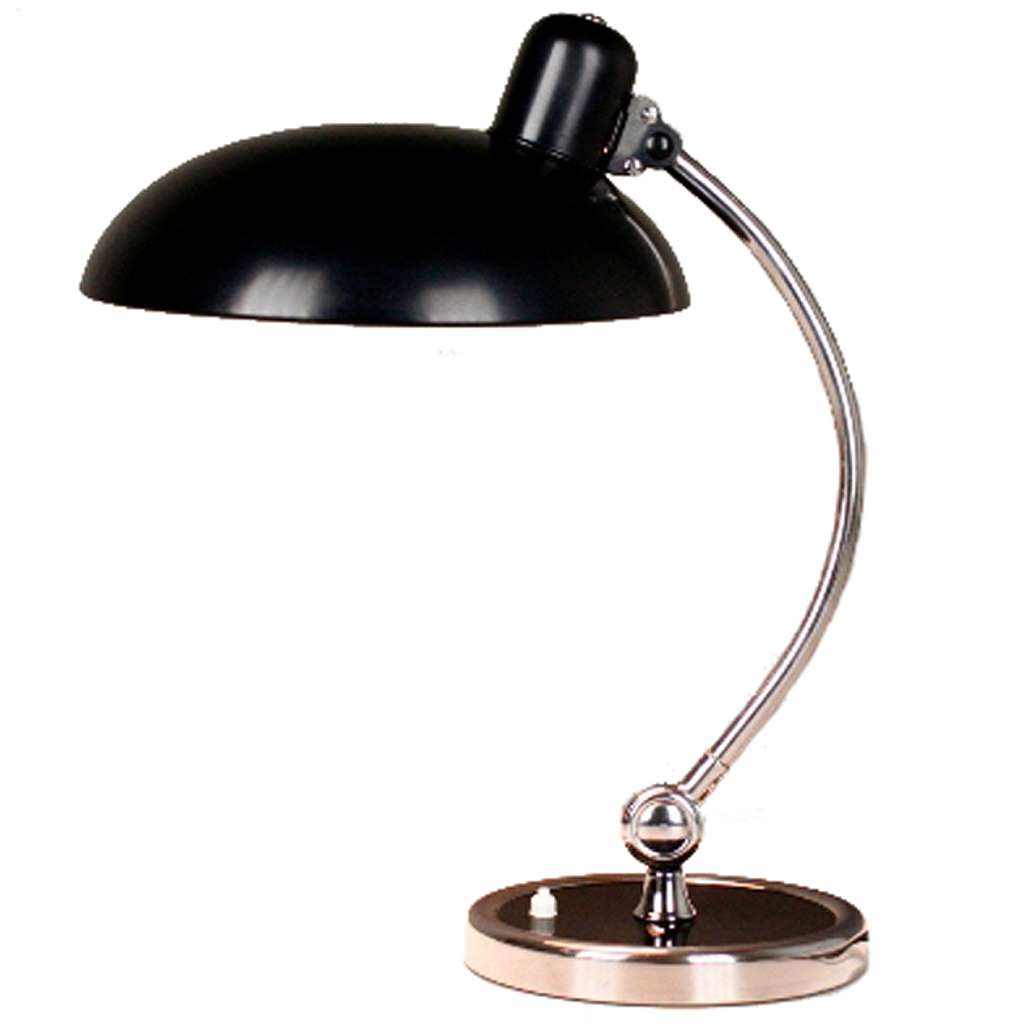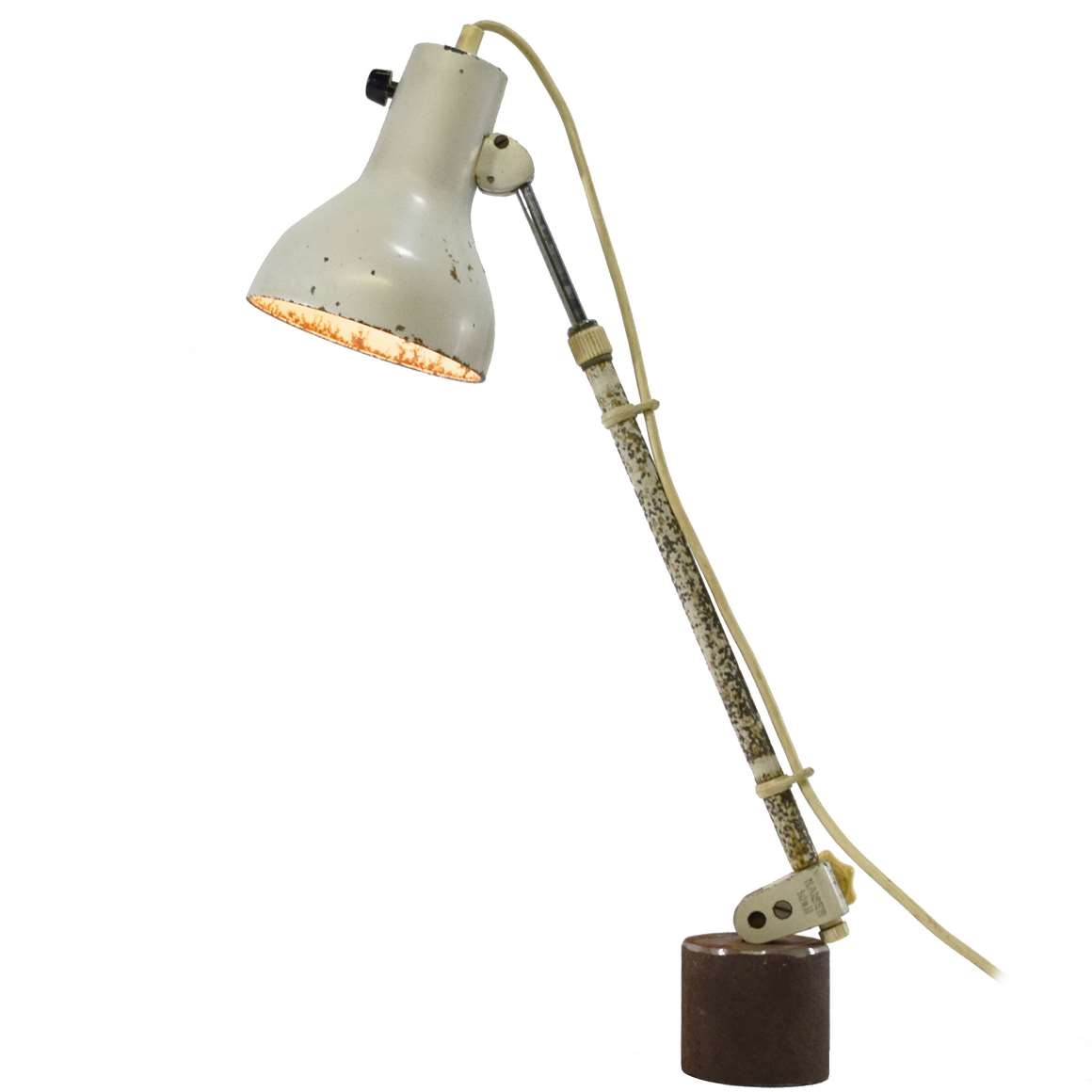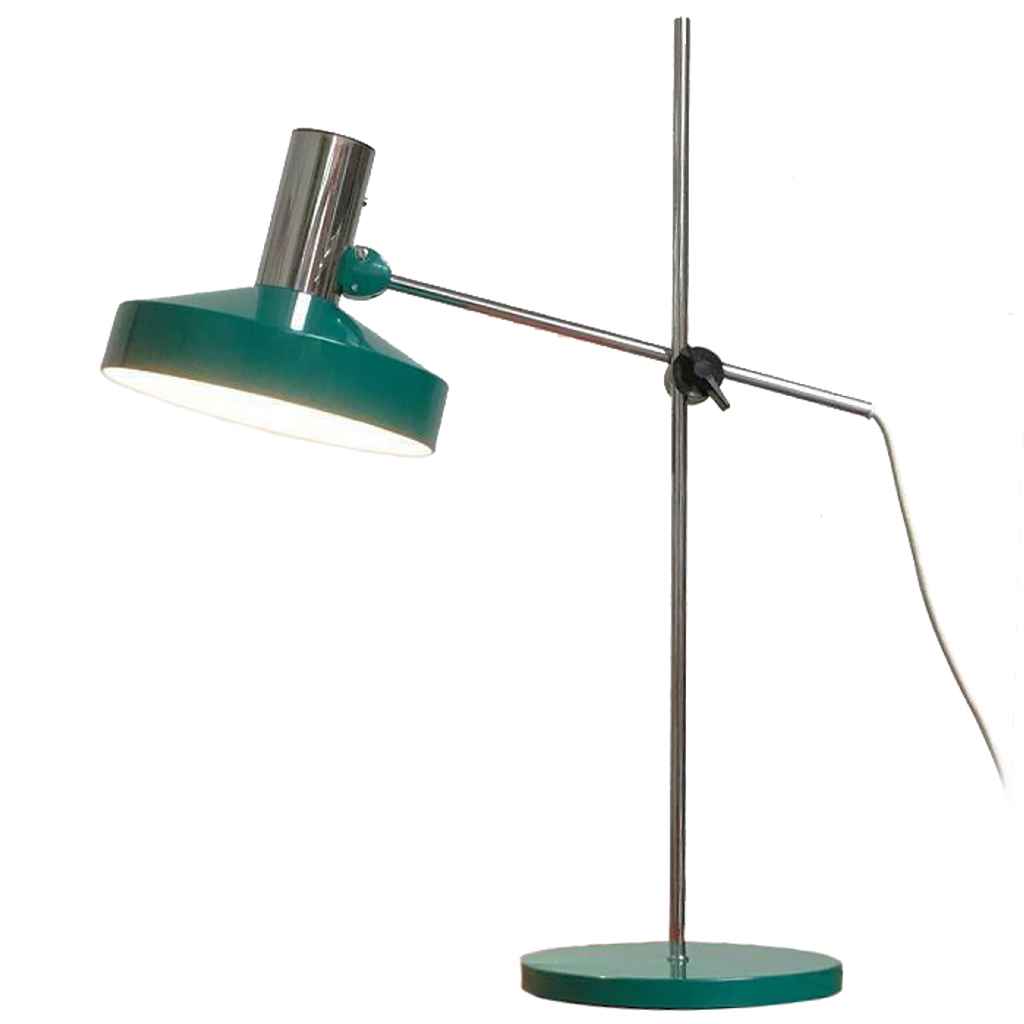Links (external links open in a new window)
Many thanks to Frank from nullviernull raum+kommunikation for the pictures. You can find his shop over here on Pamono.
Kaiser Leuchten Table Lamp 10
Materials: Round white painted metal base. Thick chrome tube/rod. Round aluminium lampshade. Some metal parts. Bakelite E27 socket.
Lampshade: ∅ 21 cm / 8.26”
Height: 28 cm / 11.02”
Base: ∅ 12 cm /4.72”
Electricity: 1 bulb E27, 1 x 65wattmaximum, 110/220 volt.
Anytypeof light bulbcanbeused, not a specific one preferred.
Period: 1960s, 1970s – Mid-Century Modern.
Designer: To be appraised.
Manufacturer:Gebr. Kaiser & Co. Leuchten KG, Lichttechnische Spezialfabrik (Light technical special factory), Neheim-Hüsten, Germany.
Other versions: This Kaiser Leuchten table lamp 10 exists in several colours. It is a small lamp and it is often used as a bedside lamp. It is labelled 10 /0028 393 5/2, 10 is the model number, 0028 the version (colour). 393 is probably the VDE approval number, you see it with several lamps by Kaiser. 5/2 I don’t know. Model 10 is a strange number for a Kaiser Leuchten lamp. But it is what it is. Probably a re-numbering in the 70s.
Gebr. Kaiser & Co. Leuchten KG
Gebr. Kaiser & Co. Leuchten KG, Lichttechnische Spezialfabrik, Neheim-Hüsten was founded by Hermann Kaiser, who came to Neheim as a worker from Heddinghausen. With a brother and a participant, he became self-employed in 1895.
At the beginning, the company concentrated on the production of nickel-plated and copper-plated lamp parts for the already existing lighting factories. The economic breakthrough came with the development of a very cheap petroleum lamp made of tinplate. During the First World War the production was converted to war materials such as storm batons.
After the war, the manufacture of electric lighting fixtures was expanded, and finally the whole branch of the business was transferred. During the period between the two world wars, the company developed into one of the largest lighting manufacturers in the region. not in the leastthanks to the lamps designed by Christian Dell.
As early as 1934 the number of workers was 350. This figure increased to about 600 to 700 employees until the beginning of the Second World War.
During the Second World War the production plants were completely destroyed. After the war a strong enterprise expansion began. Between 750 and 1000 people were temporarily employed.
Towards the end of the 1970s the company was acquired by Thorn Lighting Group. This became the property of an international investment company in 1993, and the remnants of production were transferred to Dortmund in 2000.
Several working lamps/desk lamps designed by Christian Dell are still in production and are made by Fritz Hansen.
